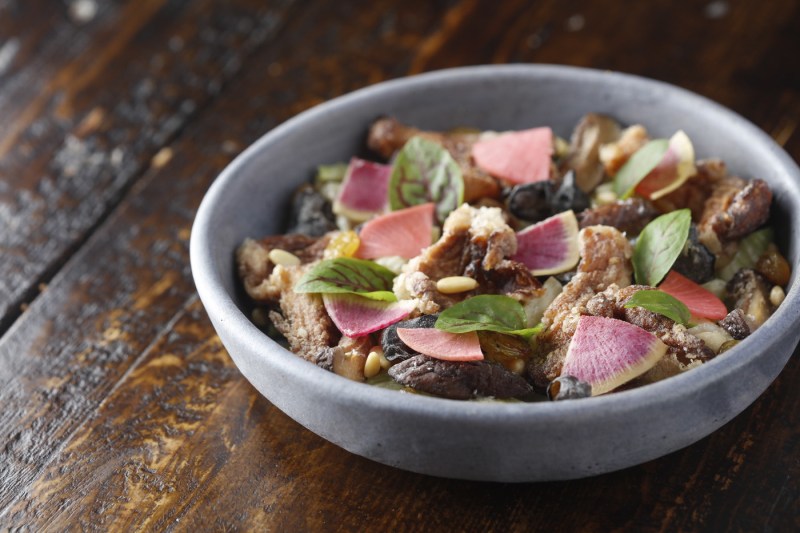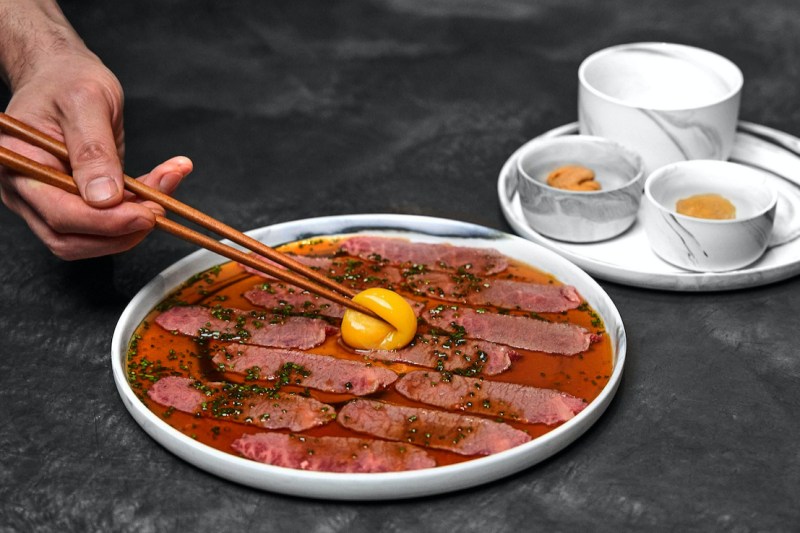
What is Korean cuisine? Is it traditional, centered on fermented, vegetable-forward flavors, rich with sesame and red chili peppers? Or is it modern and international, showcased in trendy Korean fried chicken shops and viral Korean-style corn dogs? At Oiji in the East Village, New York, Chef Brian Kim is adding to this conversation by putting his own spin on traditional Korean flavors. He calls his style “Creative Contemporary Korean cuisine.”
In recent years, Korean culture has exploded onto the global stage, dominating music, entertainment, and fashion. This is a relatively modern event since Korea has historically been overshadowed by its larger East Asian neighbors of China and Japan. With Korea’s new global reach, comes an evolution of cuisine, something that has always been the subject of intermingling cultures and nations.
Chef Brian Kim on Korean Cuisine
Chef Brian Kim is a modern, distinctly Korean example of these culinary changes. A Seoul native, Kim is a Culinary Institute of America graduate and a seasoned professional of both Seoul restaurants and prestigious American establishments like Bouley and Gramercy Tavern. In 2015, Kim opened Oiji in New York City with a mission — to showcase how Korean cuisine can be as innovative and refined as any food culture in the world.
“Our goal is to create a new type of Korean cuisine that stays true to its original roots while incorporating a wide array of various flavors, ingredients, and techniques from international cuisines,” said Kim. “I want to preserve the core flavors of authentic Korean cuisine while infusing it with new sensibilities and shaping it with new practices.”
Oiji Restaurant in NY: Hundreds of Tasting Spoons Are Used Any Given Day
When the food arrives at Oiji, the first thing that stands out is the precision of the presentation — everything is impeccable. Each ingredient component also has a reason for its inclusion, a process the result of lengthy recipe testing. “No plate gets served before I taste it myself to check every single one is flawless. That’s why hundreds of tasting spoons are used on any given day,” said Kim.
The next thing that’s apparent is that much of Oiji’s offerings don’t immediately resemble Korean food in the traditional sense. Meals at Oiji are free of the usual plentiful banchan, various small dishes that blanket the table of a typical Korean meal. Rice, while included in a few of Oiji’s dishes and the base of the Korean diet, isn’t an automatic component here. This menu design is purposeful.
“For example, if you don’t usually have rice as the base component of a meal, you might just eat salty banchan or a spicy stew as is — and then walk away thinking Korean food is too salty or spicy,” said Kim. “That’s actually why I decided to remove all banchan and opt for an à la carte menu instead, merging all flavor components into each stand-alone dish, in the most compatible combinations.” While the food at Oiji is modern with ingredients and techniques outside of traditional Korean cuisine, it doesn’t forget its foundations in Korean flavors.
Chef Brian Kim’s Favorite Dish

Kim’s favorite dish on the menu, the Oiji Bowl, is a perfect example of this combination. Consisting of sea urchin, sweet shrimp, oiji (a traditional Korean salted, pickled cucumber), and seaweed rice, the Oiji Bowl draws inspiration from the Korean island of Jeju-do (Jeju Island). But the dish is also a mix of Japanese and Italian cuisine, showcased by the house-made sushi vinegar and al dente texture of the rice. Another example is the excellent Mushroom Salad, an array of lightly fried mushrooms atop lettuce tossed in a creamy dressing accented with golden raisins and pine nuts. The result is a dish with a surprising Mediterranean-like flavor profile.
“In developing the menu, one rule of thumb is to invent something creative that’s not only new but also something you couldn’t taste anywhere else,” said Kim. “Of course we could do our own takes on more well-known or common dishes like Korean Barbecue, Bibimbap, or Bulgogi, but for our guests, we aim to create a unique experience offered only at Oiji.”
Korean Cuisine’s Future

Yet, despite these creative and modern interpretations, in Kim’s view, Korean food has not been appreciated internationally. Despite the growing impact, Kim believes Korean cuisine still has a long way to go. “Even though Korean cuisine’s popularity is growing, I think it’s still not as admired as other Western or Asian cuisines,” said Kim. “It’s just that there weren’t enough restaurants reflecting that both abroad and in New York. It’s only recently that, as a wave of young, very talented, and creative Korean chefs and restaurateurs started to show what Korean food really is and can be, the awareness and recognition started to grow, little by little.”
Kim has high hopes for the future of Korean cuisine. It’s his belief that anyone who experiences great Korean cuisine will inevitably fall in love with the food. Perhaps he’s right and this passion is fueled by the evidence of Oiji’s constantly evolving menu. Recently, Oiji introduced a new dish — the Wagyu Samhap. Thin slices of tender beef are blow-torched table-side before being covered in citrus soy sauce and centered by a single, raw egg yolk, all served with aged kimchi and Korean mustard. It’s an extravagant dish with the flair of modern theatrics. After all, why can’t Korean cuisine be both modern and authentic? The cuisine is more than robust enough to house both interpretations.



